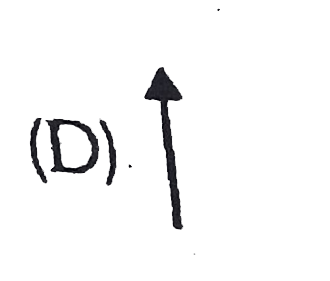If then calculate the value of .




The correct Answer is:B
To solve the problem, we need to calculate the value of |^a+√3^b| given that |^a−^b|=√2.
1. Understanding the Given Information:
We are given that |^a−^b|=√2. Since ^a and ^b are unit vectors, their magnitudes are both equal to 1.
2. Using the Magnitude Formula:
The magnitude of the difference of two vectors can be expressed as:
|^a−^b|=√|^a|2+|^b|2−2|^a||^b|cosθ
where θ is the angle between the vectors ^a and ^b.
3. Substituting the Values:
Since |^a|=1 and |^b|=1, we can substitute these values into the formula:
|^a−^b|=√12+12−2⋅1⋅1⋅cosθ=√2−2cosθ
Setting this equal to √2:
√2−2cosθ=√2
4. Squaring Both Sides:
Squaring both sides gives:
2−2cosθ=2
Simplifying this, we find:
−2cosθ=0⟹cosθ=0
5. Finding the Angle:
Since cosθ=0, the angle θ is 90∘. This means that the vectors ^a and ^b are perpendicular to each other.
6. Calculating |^a+√3^b|:
Now we need to find the magnitude of |^a+√3^b|:
|^a+√3^b|=√|^a|2+|√3^b|2+2|^a||√3^b|cosθ
Substituting the known values:
|^a+√3^b|=√12+(√3)2+2⋅1⋅√3⋅1⋅cos90∘
Since cos90∘=0, this simplifies to:
|^a+√3^b|=√1+3+0=√4=2
Final Answer:
Thus, the value of |^a+√3^b| is 2.
We are given that |^a−^b|=√2. Since ^a and ^b are unit vectors, their magnitudes are both equal to 1.
The magnitude of the difference of two vectors can be expressed as:
|^a−^b|=√|^a|2+|^b|2−2|^a||^b|cosθ
where θ is the angle between the vectors ^a and ^b.
Since |^a|=1 and |^b|=1, we can substitute these values into the formula:
|^a−^b|=√12+12−2⋅1⋅1⋅cosθ=√2−2cosθ
Setting this equal to √2:
√2−2cosθ=√2
Squaring both sides gives:
2−2cosθ=2
Simplifying this, we find:
−2cosθ=0⟹cosθ=0
Since cosθ=0, the angle θ is 90∘. This means that the vectors ^a and ^b are perpendicular to each other.
Now we need to find the magnitude of |^a+√3^b|:
|^a+√3^b|=√|^a|2+|√3^b|2+2|^a||√3^b|cosθ
Substituting the known values:
|^a+√3^b|=√12+(√3)2+2⋅1⋅√3⋅1⋅cos90∘
Since cos90∘=0, this simplifies to:
|^a+√3^b|=√1+3+0=√4=2
Thus, the value of |^a+√3^b| is 2.
Topper's Solved these Questions
- BASIC MATHSBOOK - ALLENCHAPTER - BASIC MATHSEXERCISE - Exersice-03
7 Videos
- BASIC MATHSBOOK - ALLENCHAPTER - BASIC MATHSEXERCISE - ASSERTION-REASON
11 Videos
- AIIMS 2019BOOK - ALLENCHAPTER - AIIMS 2019EXERCISE - PHYSICS
40 Videos
- CIRCULAR MOTIONBOOK - ALLENCHAPTER - CIRCULAR MOTIONEXERCISE - EXERCISE (J-A)
6 Videos
Similar Questions
If ∣∣ˆa−ˆb∣∣=√2 then calculate the value of ∣∣ˆa−√3ˆb∣∣.
View SolutionIf ˆa and ˆb are non-collinear unit vectors and if ∣∣ˆa+ˆb∣∣=√3, then the value of (2ˆa−5ˆb).(3ˆa+ˆb) is :-
View SolutionThe value of 2√3+√3 is
View SolutionWrite the value of (2+√3)(2−√3)
View SolutionLet ˆa,ˆbandˆc be three unit vectors such that ˆa=ˆb+(ˆb׈c), then the possible value(s) of ∣∣ˆa+ˆb+ˆc∣∣2 can be :
View SolutionIf a=4√6√2+√3 then the value of a+2√2a−2√2+a+2√3a−2√3
View SolutionIf ∣∣ˆA׈B∣∣=−√3ˆA.ˆB, then ∣∣ˆA−ˆB∣∣=…………………..
View Solutionfind the value of
(3+√3)×(2+√2)
View SolutionFind a unit vector parallel to the vector ˆi+√3ˆj
View SolutionIf vector (ˆa+2ˆb) is perpendicular to vector (5ˆa−4ˆb), then find the angle between ˆaandˆb.
View Solution
